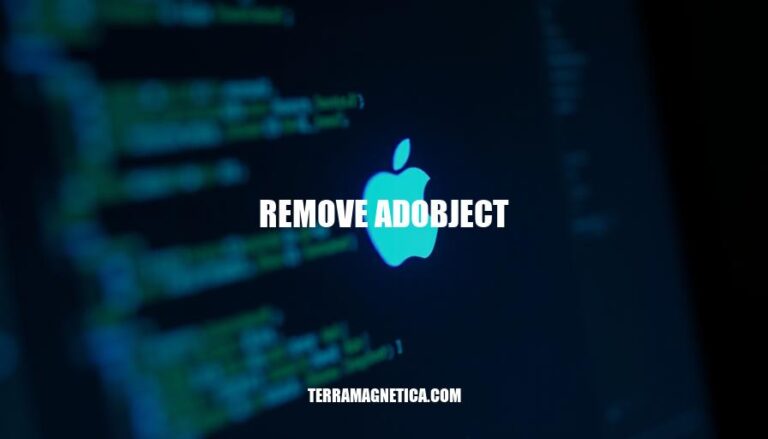


The Remove-ADObject cmdlet in PowerShell is used to delete objects from Active Directory. This is crucial for maintaining a clean and efficient directory by removing outdated or unnecessary objects, such as old user accounts or computers. Proper use of this cmdlet helps ensure the security and organization of your Active Directory environment.
The Remove-ADObject cmdlet is used in PowerShell to delete an Active Directory object. Its primary purpose is to remove any type of Active Directory object, such as users, computers, groups, and organizational units. You can identify the object to be removed by its distinguished name (DN) or globally unique identifier (GUID).
Here’s the syntax for the Remove-ADObject cmdlet along with its necessary parameters and their functions:
Remove-ADObject [-WhatIf] [-Confirm] [-AuthType <ADAuthType>] [-Credential <PSCredential>] [-Identity] <ADObject> [-IncludeDeletedObjects] [-Partition <String>] [-Recursive] [-Server <String>] [<CommonParameters>]
-Identity <ADObject>: Specifies the Active Directory object to remove. You can identify the object by its distinguished name (DN), GUID, SID, or SAM account name.-AuthType <ADAuthType>: Specifies the authentication method to use. Possible values are Negotiate or Basic.-Credential <PSCredential>: Specifies the user account credentials to use for the operation.-IncludeDeletedObjects: Includes deleted objects in the search.-Partition <String>: Specifies the partition to search for the object.-Recursive: Removes all child objects of the specified object.-Server <String>: Specifies the Active Directory Domain Services instance to connect to.-WhatIf: Shows what would happen if the cmdlet runs. The cmdlet is not run.-Confirm: Prompts for confirmation before running the cmdlet.These parameters allow you to precisely control which Active Directory object to remove and how the removal process is handled.
Sure, here are specific examples of using Remove-ADObject in different scenarios within Active Directory:
Remove a Computer Object by Distinguished Name:
Remove-ADObject -Identity 'CN=AmyAl-LPTOP,CN=Computers,DC=FABRIKAM,DC=COM'
Remove an Organizational Unit (OU) and All Child Objects:
Remove-ADObject -Identity 'OU=Finance,OU=UserAccounts,DC=FABRIKAM,DC=COM' -Recursive
Remove a User Object by GUID:
$guid = [GUID]::NewGuid()
Remove-ADObject -Identity $guid
Remove a Group Object by Distinguished Name:
Remove-ADObject -Identity 'CN=SalesGroup,CN=Users,DC=FABRIKAM,DC=COM'
Remove a Deleted Object from the Deleted Objects Container:
Remove-ADObject -Identity 'CN=JohnDoe\0ADEL:12345678-1234-1234-1234-123456789012,CN=Deleted Objects,DC=FABRIKAM,DC=COM'
These examples cover various scenarios such as removing computer objects, organizational units, user objects, group objects, and deleted objects.
Here are some common errors encountered when using the Remove-ADObject cmdlet and troubleshooting tips:
Non-Unique Identifier Error:
Get-ADObject before attempting removal.Insufficient Permissions:
Object Not Found:
Get-ADObject to verify the object exists and is correctly identified.Protected from Accidental Deletion:
ProtectedFromAccidentalDeletion attribute to $false using Set-ADObject before attempting to remove it.Replication Latency:
Repadmin /syncall to force synchronization across domain controllers.Here are some best practices for using Remove-ADObject to ensure efficient and safe management of Active Directory objects:
Remove-ADObject cmdlet in a production environment, test it in a lab environment to understand its impact.-Confirm Parameter: Utilize the -Confirm parameter to prompt for confirmation before deletion, adding an extra layer of safety.Following these practices will help you manage Active Directory objects more safely and efficiently.
The Remove-ADObject cmdlet is crucial for managing Active Directory objects, allowing administrators to safely delete objects that are no longer needed. It’s essential to use this cmdlet with caution and follow best practices to avoid accidental deletions and ensure compliance.
Get-ADObject or distinguished name/GUIDBy following these guidelines, administrators can efficiently manage Active Directory objects while minimizing risks.